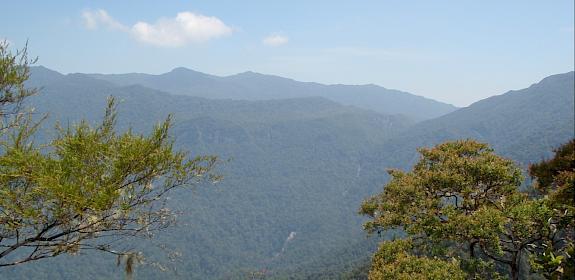Securing a safe future for ice-age antelope
The story of the Saiga Antelope is a remarkable conservation success. So far.

After a population crash at the start of this century, this iconic species - which used to roam Central Europe and Asia in their millions – has made an incredible comeback.
This week in Uzbekistan, thousands of conservationists will meet at a conference designed to protect migrating species – of which the Saiga is one.
Specialists from TRAFFIC, the global expert on the issue of trade in wild species, have called for urgent action (as previously raised at CITES) to quantify the amount of Saiga horn in existing global stockpiles, to make sure that loopholes in trading rules do not bring Saiga populations to the brink of extinction once again.
So far, range, transit and consumer countries have made little progress in setting up robust stockpile management.
Background
In a landmark decision in December 2023, the Saiga antelope was reclassified from ‘Critically Endangered’ to ‘Near Threatened’ on the IUCN Red List thanks to a resurgence of the population in Kazakhstan – one of the handful of places where the animals still roam. It was rightly heralded as a significant conservation success story, which are sadly all too rare.
Back in 2005, the Saiga population in Kazakhstan collapsed to a perilous low of 48,000. But thanks to determined and ambitious collaboration between the government, local communities and international NGOs, the population has now risen to more than 1.9million.
This has led to the exploration of issues around hunting and trade in Saiga, particularly the horns that are widely used in traditional medicine, as well as Saiga meat, offering rural populations who manage the herds an opportunity to generate greatly needed income.
Warning
But TRAFFIC Director for Southeast Asia, Kanitha Krishnasamy, warned that unless we urgently seek to clarify how much Saiga horn already exists in government, commercial and private stockpiles around the world – current and from before trade in the horn was restricted when populations crashed - it will be impossible to determine between legal and illegal trade. This, in turn, could lead to illegal and unsustainable hunting and trading, and once again could push Saiga to the brink.
TRAFFIC representatives were calling for urgent and collaborative action as part of a side event at the Fourteenth Meeting of the Conference of the Parties to the Convention on the Conservation of Migratory Species of Wild Animals (CMS COP14).

Krishnasamy said: “These wonderful animals are once again thriving in Kazakhstan. They are migrating grazers who are essential for promoting biodiversity within their ecosystems.
Whilst we celebrate the rise in population, Saiga are not completely out of danger. We must remember how easily these animals almost went extinct due to factors including environmental change, hunting and illegal trade. "
“So, first we need to know how much horn is already out there. Then it will be imperative to carefully regulate and monitor trade to ensure it is legal and sustainable. We stand ready to support and assist Parties to do this.”
The side meeting to explore regulations and management actions on stockpiles of Saiga horns was co-hosted by the US Fish and Wildlife Service and the Saiga Conservation Alliance. Representatives from TRAFFIC and CITES provided insights into best practices for managing stockpiles and regulating trade, as well as requirements for reporting and compliance under CITES. The meeting included Saiga range states, international NGOs and academic partners, all contributing to navigating the complex dynamics of stockpile management and trade, to achieve collaborative solutions for species and people.
Notes:
For more information on TRAFFIC’s work with Saiga and with stockpile management, please see:
- New guidance on managing stockpiles
- Spotlighting wild species trade in Central Asia
- Regional Workshop for Central Asia on Combating Illegal Wildlife Trade
- Saiga Antelope Trade: Global trends with a focus on South-East Asia
- Establishing a robust National Ivory Stockpile Management System in Cameroon
Convention on International Trade in Endangered Species of Wild Fauna and Flora (CITES)

The Convention on International Trade in Endangered Species of Wild Fauna and Flora, is an international agreement between governments that aims to ensure that international trade in specimens of wild animals and plants does not threaten their survival. Find out more here.
About USFWS

The U.S. Fish and Wildlife Service’s International Affairs Program coordinates domestic and international efforts to protect, restore, and enhance the world’s diverse wildlife and their habitats with a focus on species of international concern.
About Saiga Conservation Alliance

The saiga antelope once roamed across Europe and North America alongside mammoths and sabre-toothed cats. Saigas live in some of the harshest lands in the world, often migrating long distances between summer and winter pastures. Their unique physiology is ideally suited for this climate and habitat. Once numbering in the millions, the saiga population crashed by 95% in fifteen years, the fastest decline ever recorded for a mammal species. They are now critically endangered. In May and early June of 2015, over 200,000 saiga in central Kazakhstan died suddenly due to a respiratory illness. The fate of the saiga is also closely tied to the economic downfall of the USSR in the 1990s, and illegal poaching to sell the horns for “medicine.”





